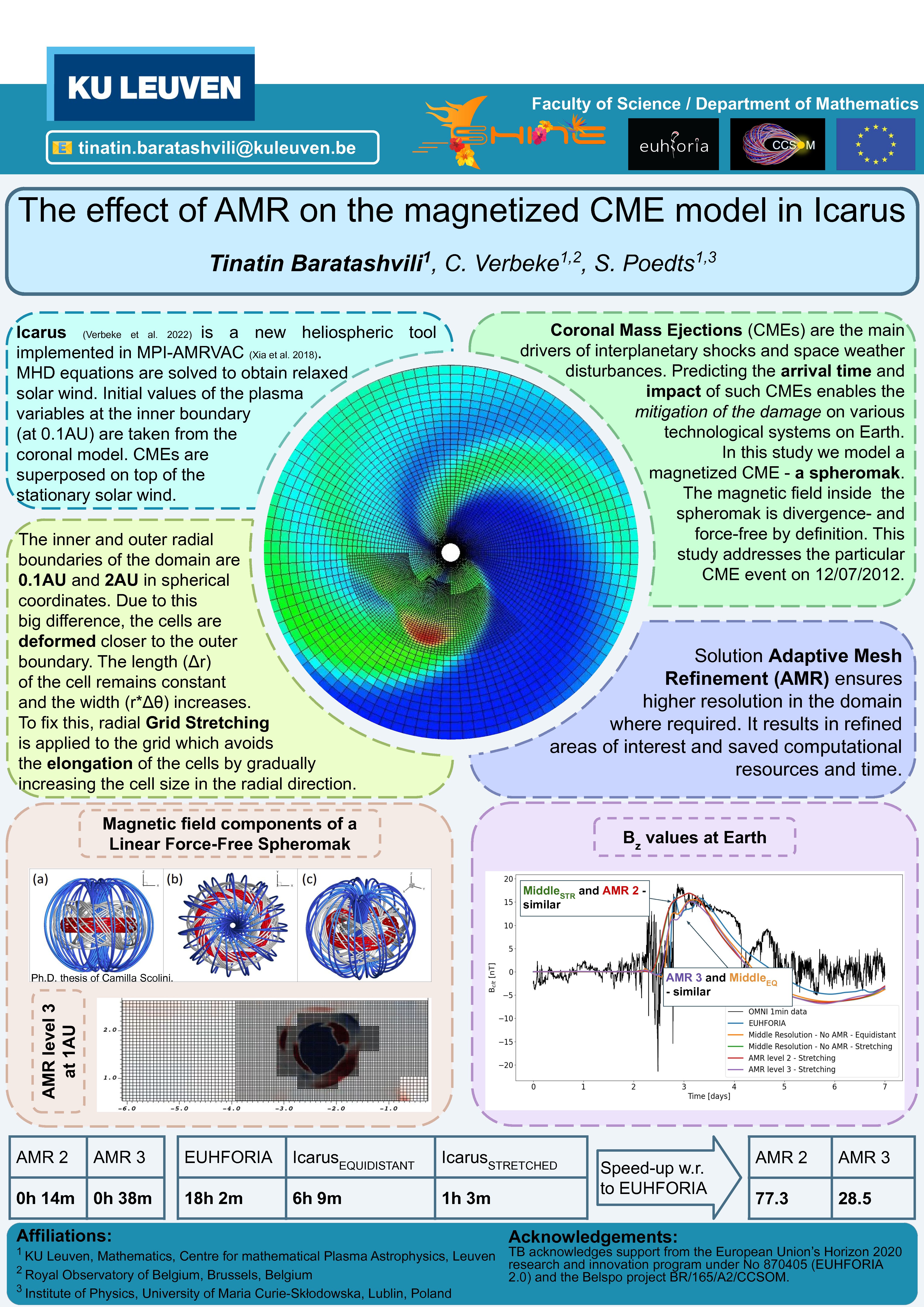Authors: Tinatin Baratashvili (KU Leuven), Stefaan Poedts (KU Leuven)
Coronal Mass Ejections (CMEs) are the main drivers of interplanetary shocks and space weather disturbances. One of the key parameters that determine the geo-effectiveness of the CME is its internal magnetic configuration. Strong CMEs directed towards Earth can have a severe impact on our planet and their prediction can mitigate possible damages.
The novel heliospheric model ICARUS, which is implemented within the framework of MPI-AMRVAC (Xia et al., 2018) introduces new capabilities to model the heliospheric wind and real CME events. Advanced techniques, such as adaptive mesh refinement and grid stretching are implemented. By imposing these techniques, we avoid cell deformation in the domain and only the necessary/desired areas are refined to higher spatial resolutions (and coarsened again when the high resolution is no longer necessary, e.g. behind a travelling shock wave). The refinement and coarsening conditions are controlled by the user. These techniques result in optimised computer memory usage and a significant speed-up, which is crucial for forecasting purposes.
In order to model the magnetic field and its interaction with the solar wind, the linear force-free spheromak (LFFS) model from EUHFORIA is implemented in the new heliospheric model. In order to assess the ICARUS model capabilities to predict the solar wind conditions in the heliosphere, especially at L1, we consider a real CME event. Further, we perform a comparison of the results of the original EUHFORIA model and the novel heliospheric model. To perform the full comparison we compare the time series data at L1 and other satellites, while we also monitor the time that simulations require to model the heliospheric wind and CME events.
The solution mesh refinement is applied to the CMEs in order to model its arrival time and interior magnetic field better. To analyse the results, the radial, longitudinal and latitudinal components of the magnetic field are compared to the original EUHFORIA simulations and the observed data. As a result, the new heliospheric model provides accurate results and gives various options to apply to the domain in simulations, while the simulations are much more efficient and save significant amounts of computational resources and time.
This research has received funding from the European Union’s Horizon 2020 research and innovation programme under grant agreement No 870405 (EUHFORIA 2.0).


